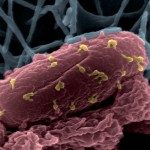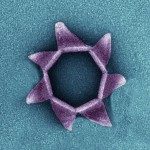Lien vers Pubmed [PMID] – 16357193
Proc. Natl. Acad. Sci. U.S.A. 2005 Dec;102(52):18872-7
Escherichia coli thioredoxin is normally a cytoplasmic protein involved in the reduction of disulfide bonds. However, thioredoxin can be translocated to the periplasm when it is attached to a cotranslational signal sequence. When exported to the periplasm, it can partially replace the activity of DsbA in promoting the formation of disulfide bonds. In contrast, when thioredoxin is fused to a posttranslational signal sequence, very little of it appears in the periplasm. We propose that this absence of posttranslational export is due to the rapid folding of thioredoxin in the cytoplasm. We sought mutants of thioredoxin that retarded its folding in the cytoplasm, which we accomplished by fusing thioredoxin to a posttranslational signal sequence and selecting for mutants in which thioredoxin was exported to the periplasm, where it could replace DsbA. The collection of mutants obtained represents a limited number of amino acid changes in the protein. In vitro studies on purified mutant proteins show that all but one are defective in the kinetics and thermodynamics of protein folding. We propose that the slower folding of the thioredoxin mutant proteins in the cytoplasm allows their export by a posttranslational pathway. We discuss some implications of this class of mutants for aspects of the folding pathway of thioredoxin and for its mechanism of export. In particular, the finding that a folding mutant that allows protein translocation alters an amino acid at the C terminus of the protein suggests that the degree to which thioredoxin folds during its translation must be severely restricted.

